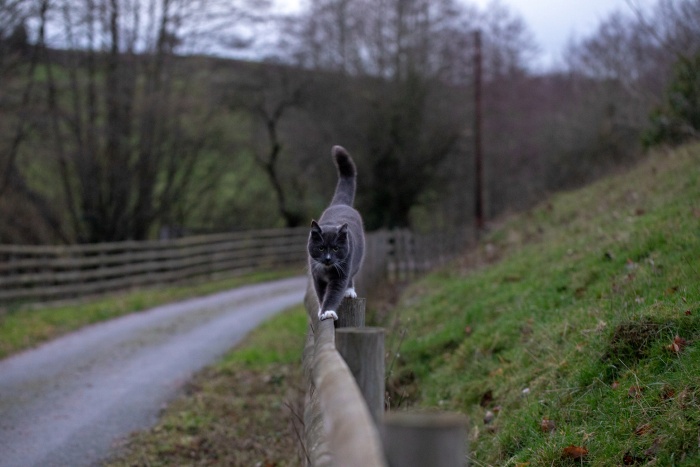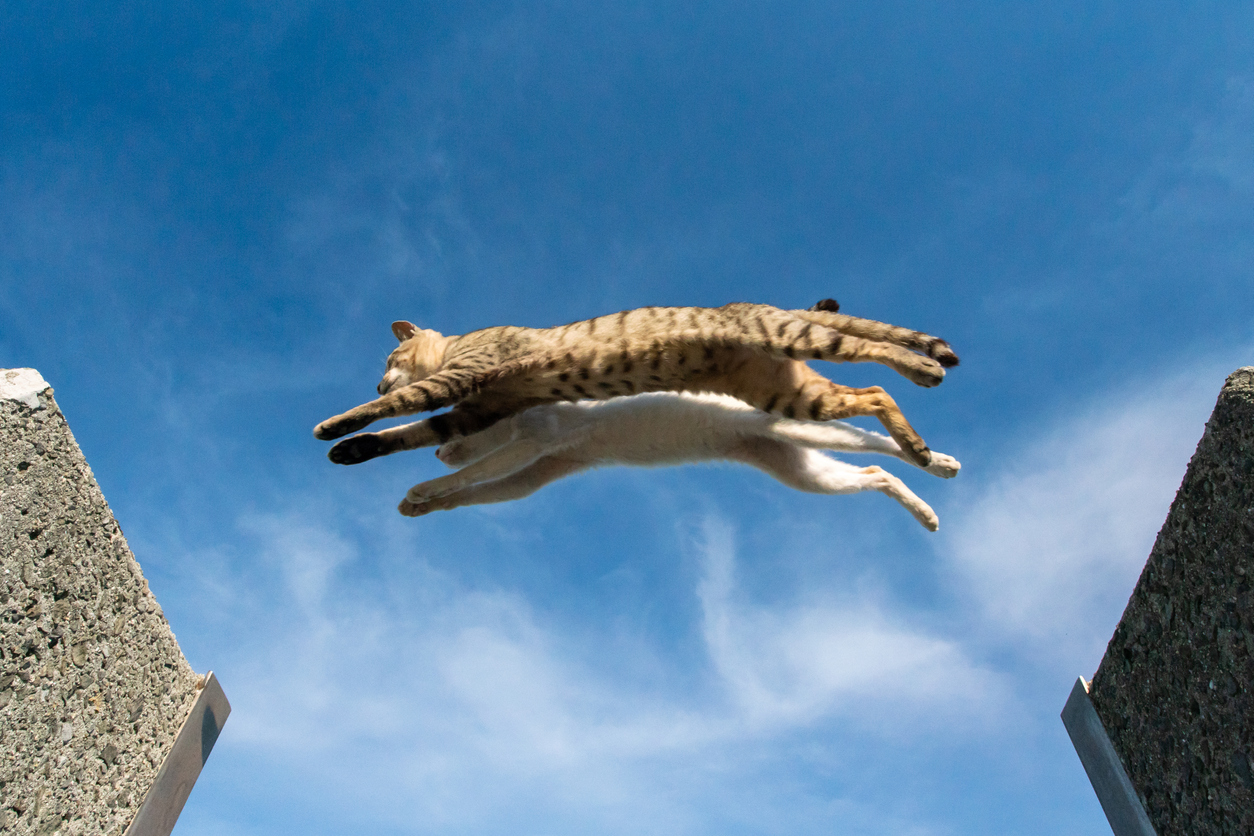How Fast Can Cats Run?
If you’re lining up a human sprinter and an average housecat for the 100-meter dash, the ordinary feline Fluffy McNapperson would run circles around them. At best, the fastest a person can run is about 27 mph, which has only been achieved by a few well-trained athletes. Whereas, a typical domestic cat can hit speeds of about 30 mph without training or even warming up. Just motivate your kitty to run away from or towards something and a cat can run cross the 100-meter finish line a whopping 2 seconds faster than the fastest human. If they don’t get distracted, of course.
Cat Sprinting at Home: Beware the Zoomies!
It can be hard to clock how fast your catto can go because it is difficult to predict when kitty is going to take off in a headlong sprint. One second your cat is napping, and then, sometimes without even the warning of a playful butt-wiggle, they’re off, zooming at high speeds while you wonder what has possessed them.
To top it off, cats sometimes decide to test their mettle as a sprinter at night or early in the morning, when you’re trying to sleep. That’s thanks to the crepuscular nature of cats, being more active at dusk and dawn when their predatory instincts kick in. And, with their excellent night-vision, kitty isn’t too worried about missing a stair or careening into a corner.
How High or Far Can Cats Jump?
Your average housecat can easily jump between 5 and 6 times their own height, routinely jumping vertically 6-8 feet – without a running start. If you’ve ever seen a cat jump from the floor to the top of the refrigerator or jump over a backyard privacy fence in a single bound, you’ve seen their incredible back leg muscles in action. If a human could jump 5-6 times his height like a feline can, they could jump between 20 and 3 feet high. So, um, kitty wins again.
Cat Acrobats: Flexing Kitty Agility Every Day
Cat owners have little acrobats in their homes every day, tiptoeing across a railing, pulling themselves up parkour-style, or nailing the dismount from a counter or high place. Cats may not wear unitards or do double-twisting double-back flips, but they do have one thing human acrobats do not: an innate ability to know where they are in the air, how far they are from the ground, and how to twist in mid-air to make sure they land feet-first.
How Do Cats Land on Their Feet?

You may have heard that cats always land on their feet, and while that isn’t 100% true, it’s mostly true. Cats have a “righting reflex” that lets them know which way is up – and down – thanks to a complex vestibular apparatus in their inner ears. They also have the ability to rotate the front and back halves of their bodies separately and can twist their flexible spines in several simultaneous directions along the length.
These feline features allow mid-air cats to point themselves downward, look for the ground and turn themselves around to stick the landing, usually quite gracefully. Should your cat bobble or take a step, they’ll cast a challenging stare as if to dare you to mention it or look off aloofly, pretending not to have noticed (so you didn’t either).
A cat’s inner-ear system also allows for superior balance for walking on ledges and perching on posts.
Even Champion Cats Poop
Whether your catto is a champion sprinter, jumper, or napper, all feline athletes and loungers need a properly maintained litter box filled with 3-4 inches of cat litter they love. ARM & HAMMER™ Cat Litter is some of the strongest available to fight odor and wetness for up to 7 days.
Try one of these ARM & HAMMER™ favorites:
- For 7-day odor control that’s strong enough for multiple cats, try ARM & HAMMER™ Clump & Seal™, Complete Odor Sealing Clumping Litter.
- For lightweight litter that’s easy-to scoop, try ARM & HAMMER™ Clump & Seal™ AbsorbX Lightweight Clumping Litter.
- For an ideal litter for multi-cat households, try: ARM & HAMMER™ Original Multi-Cat Strength Clumping Litter.
Sorry, human athletes. Domestic housecats are faster, stronger, and more graceful. It’s one more way kitties plan to take over the world. After their nap, of course.


